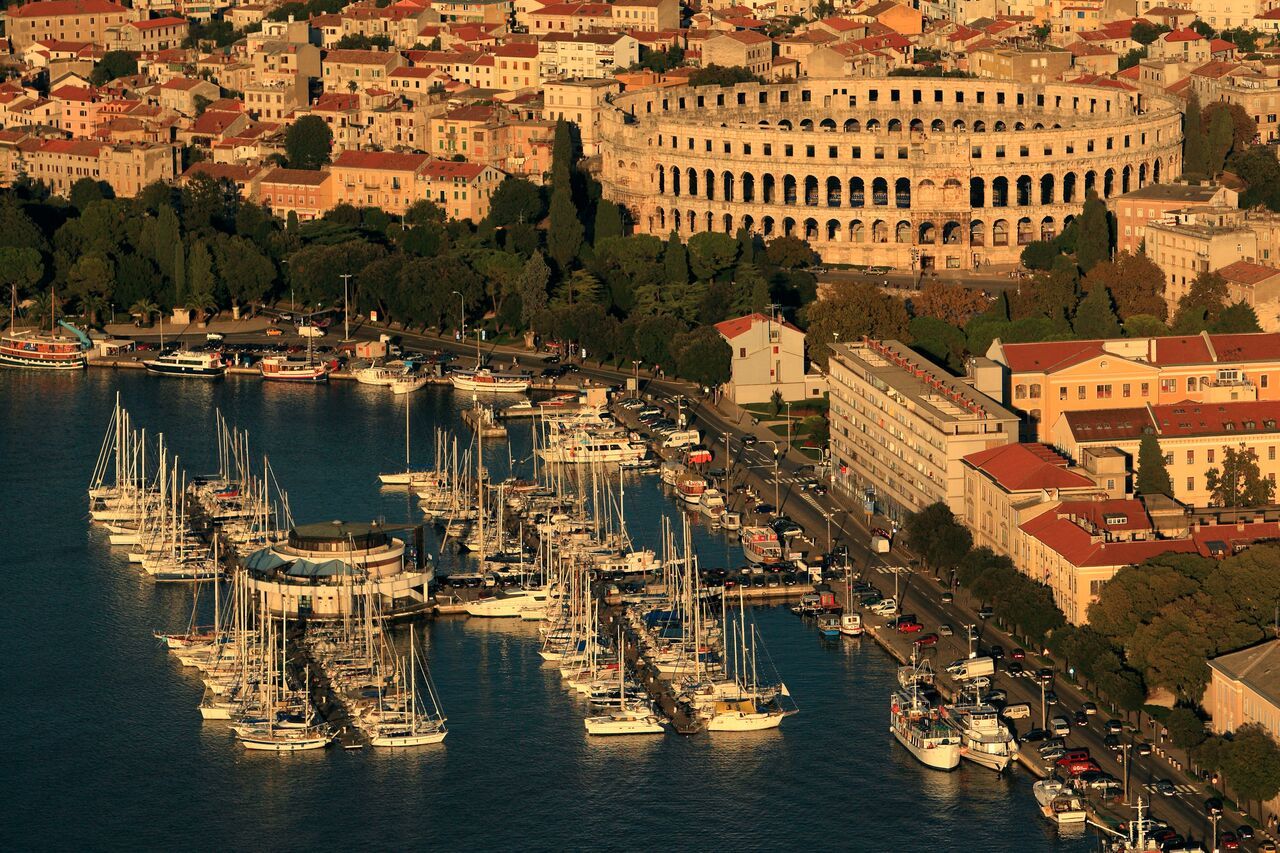Standing timelessly in the very centre of modern life, Pula Arena is a truly magnificent sight, but just how has it managed to withstand the often harsh tides of time?
While modern structures succumb to the wind and the waves and start showing the effects nature's elements have had on them sooner or later, it seems that ancient Roman structures are all the more formidable and powerful as time goes by - but why? And how?

As Sergej Zupanic/Express writes on the 21st of August, 2018, one of the common questions from tourists when visiting archaeological sites which date from Roman times is just how these industrious people managed to build such enormous, often intricate buildings, so steadily. Such questions are often asked in particular regard to constructions like the stunning 17th century Diocletian's Palace in Split, the almost 2,000 year-old Arena in Pula, and many Roman structures that are directly in the sea. What the Romans used to build their breakwaters has long been clear - a mixture of volcanic ash, limestone, and sea water itself.

Modern structures are by far weaker than their aged Roman counterparts, and seven curious American scientists have finally discovered what the secret is. They then went on to publish it in an article in the American Mineralogist scientific journal. Even Pliny the Elder, a well-known commander, as well as a celebrated early Roman author, naturalist and natural philosopher, wrote in Naturalis Historia that Roman concrete was ''getting stronger and more resistant to waves every day.''

Scientists have analysed material samples from various Roman breakwaters and other similar structures, and surprisingly found that, among other things, they include the mineral aluminum tobermorite. This substance is otherwise extremely rare and not very easy to produce at all. This mineral, for example, is sometimes used as a way to produce elements for the construction of concrete fire walls.
While today we have the possibility and relative ease of heating these elements in the process of their production at 800°C, in Roman times such a task would have been extremely difficult and the ancient builders certainly didn't have an easy time of it.

Despite obstacles, it turned out that aluminum tobermorite was present in a great many jaw-dropping Roman structures, often combined with another useful mineral, phillipsite, a hydrated potassium, calcium and aliminium silicate. The aforementioned seven American experts has their minds proverbially ''blown'' when examining the methods used by the Romans, and just how they managed to achieve this given the vastly different circumstances when compared to the modern day.

Portland cement is used for modern buildings, and the last thing that construction engineers want is for the building to alter in some way following the completion of construction. Their predecessors from the Roman Empire, however, counted on the fact that the minerals which effectively cause alterations, by making the concrete appear harder and stronger over the centuries, are already present in the material.
While much more advanced than most in Europe at the time, the Romans certainly had no idea back then of the chemistry of the materials they were using in the way that we do today, yet they managed to construct their often breathtaking structures, arenas and grand palaces in a way that showed a far greater understanding than perhaps even we do in the modern age, so many thousands of years following the eventual collapse and demise of their glorious empire.

The next challenge for scientists is to develop methods based on the old, tried and tested Roman model, which would allow such powerful construction to be possible today at the industrial level.
Click here for the original article by Sergej Zupanic for Express


